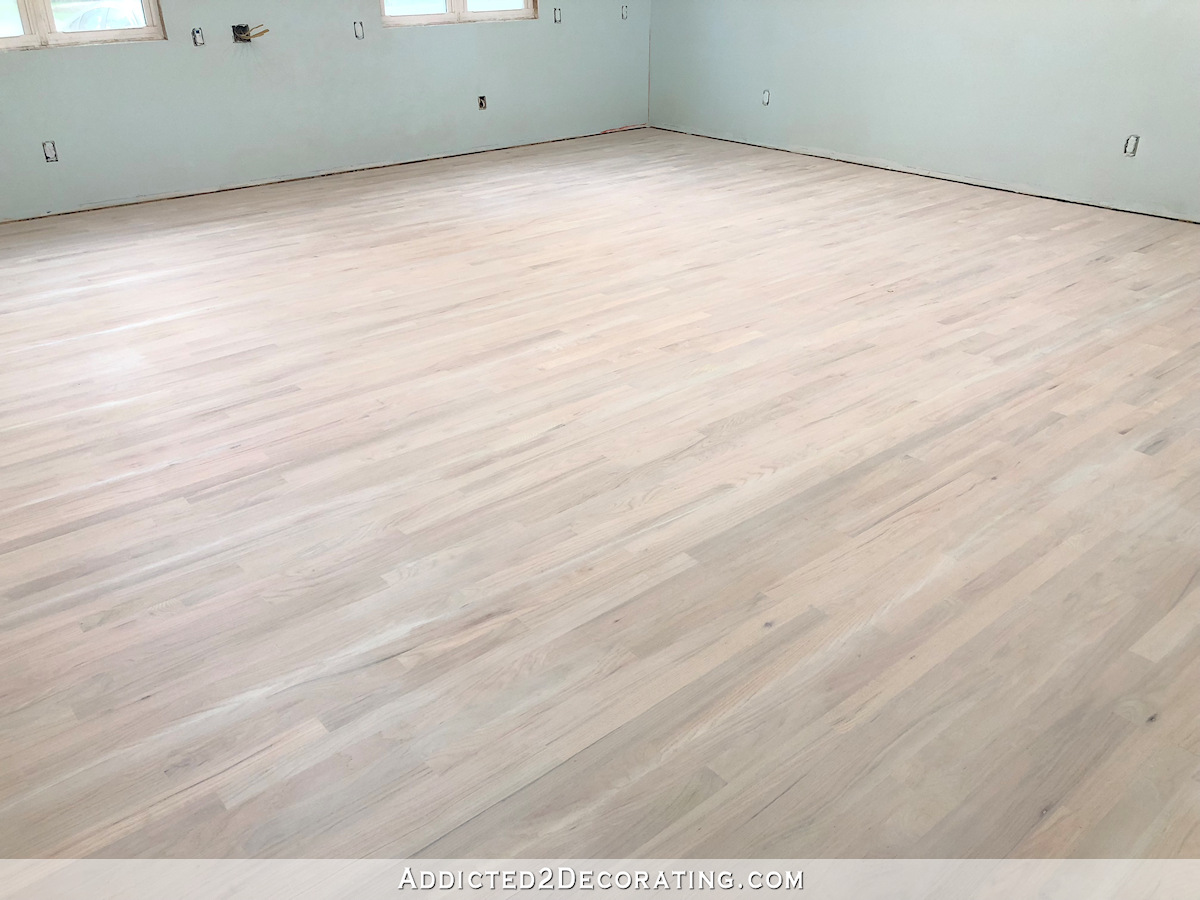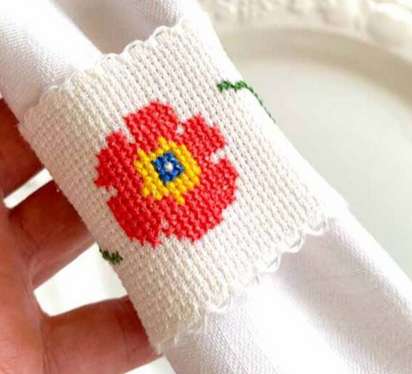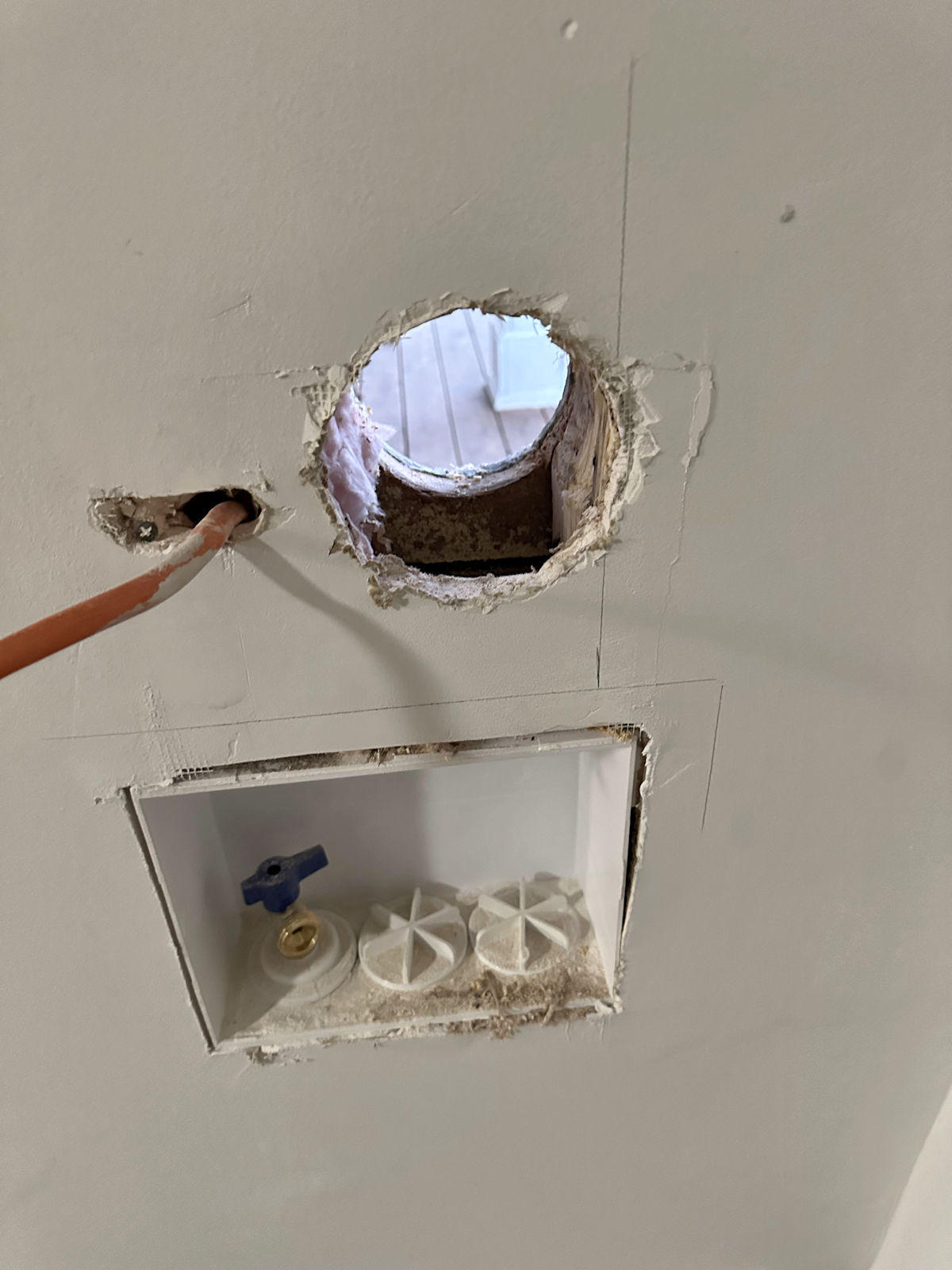[ad_1]
If you’re a regular reader around here, you know that I will very soon be installing, staining, and sealing new red oak hardwood flooring in two rooms and a foyer in our house. The entire bedroom suite is currently without flooring. Right now, it just has plywood subfloor throughout. So after I get that flooring installed, I plan to finish it the same way I finished the rest of the hardwood flooring in our house with polyurethane.
I had someone comment on an old post recently asking about how well polyurethane holds up to animals, and that reminded me that I’ve been wanting to share my own experiences with all four hardwood floor finishes I’ve used in our house over the last 12 years, and how well each one of them held up over time. That includes the Waterlox floors that I did originally in our house, the polyurethane that is currently on the floors, as well as the two painted floors — one painted floor topcoated with Varathane water-based polyurethane and one painted floor with no topcoat at all. that we’ve had in two rooms of the house. Let’s start with the Waterlox.
Waterlox for hardwood floors
When we bought our house back in August 2013, the very first thing I did before we moved into the house was remove all of the carpet, sand all of the original hardwood floors, and seal them with Waterlox. They looked great when they were finished.
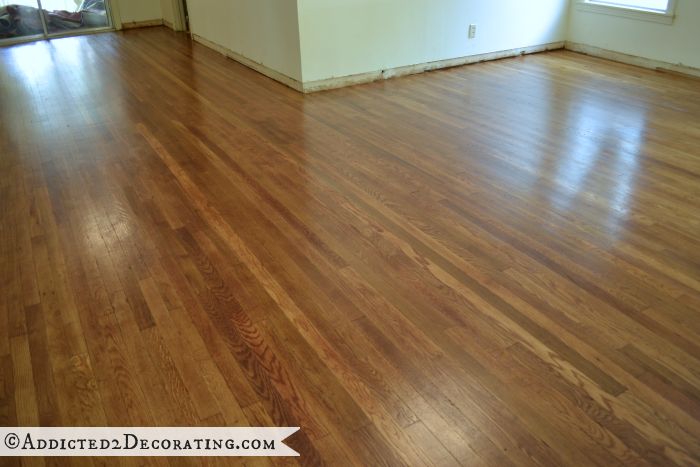

One of the reasons I chose Waterlox originally is because it’s not a long, drawn out process to finish the floors, and Waterlox makes it very easy to spot-finish areas on the floors if you get a scratch or gouge. Since it’s just oil with hardeners in it, spot finishing won’t result in an uneven finish.
I had to do that when our sofa gouged the floor and left this deep mark.
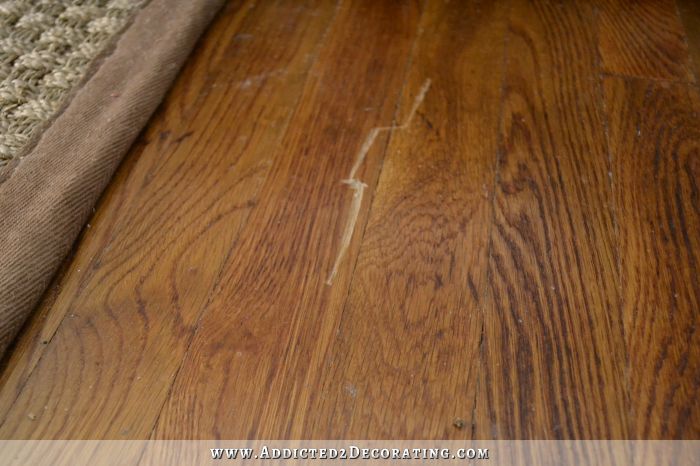

I just sanded that specific area, applied more Waterlox, and the gouge disappeared.
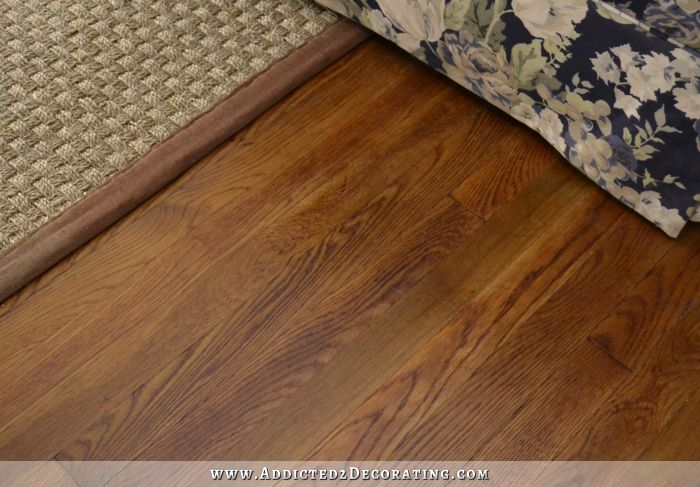

It’s also very easy to refinish an entire room with Waterlox. Back when I was trying to turn the living room into a dining room, I decided that I wanted to recoat the whole floor in the room. So I did a very quick sanding on the whole floor using my small orbital sander (no need to rent the big drum sander to get all of the previous finish off!) and recoated. It was a fairly easy process, and it looked brand new afterwards.


My one issue with Waterlox is that if you want the floors to be this easy to repair, you really can’t use stain with the product, so you’re stuck with whatever color the oils make the floor. If you decide to stain before using Waterlox, or if you decide to add stain to the Waterlox (both methods are approved by the company), the floors are no longer going to be so easy to repair because any new stain that you add to the floor that you want to repair is going to leave a darker spot.
So in order to maintain that easily repairable finish, the Waterlox has to be used by itself with no stain. And that means you’re at the mercy of whatever color it makes your particular species of wood. That might be great if you have a beautiful wood like walnut or even white oak. But my floors are red oak, so Waterlox with no stain had a very orange look to it.
Oil-based Polyurethane For Floors
In 2017, I decided to redo our floors to get rid of the orange, so I had all of the floors sanded (I hired it out the second time), and then I finished them again. I used Minwax conditioner first, followed by a mix of two Minwax stains, and the topcoated with Minwax oil-based polyurethane tinted with a bit of stain. The floors turned out gorgeous and I was able to get the exact color I wanted.
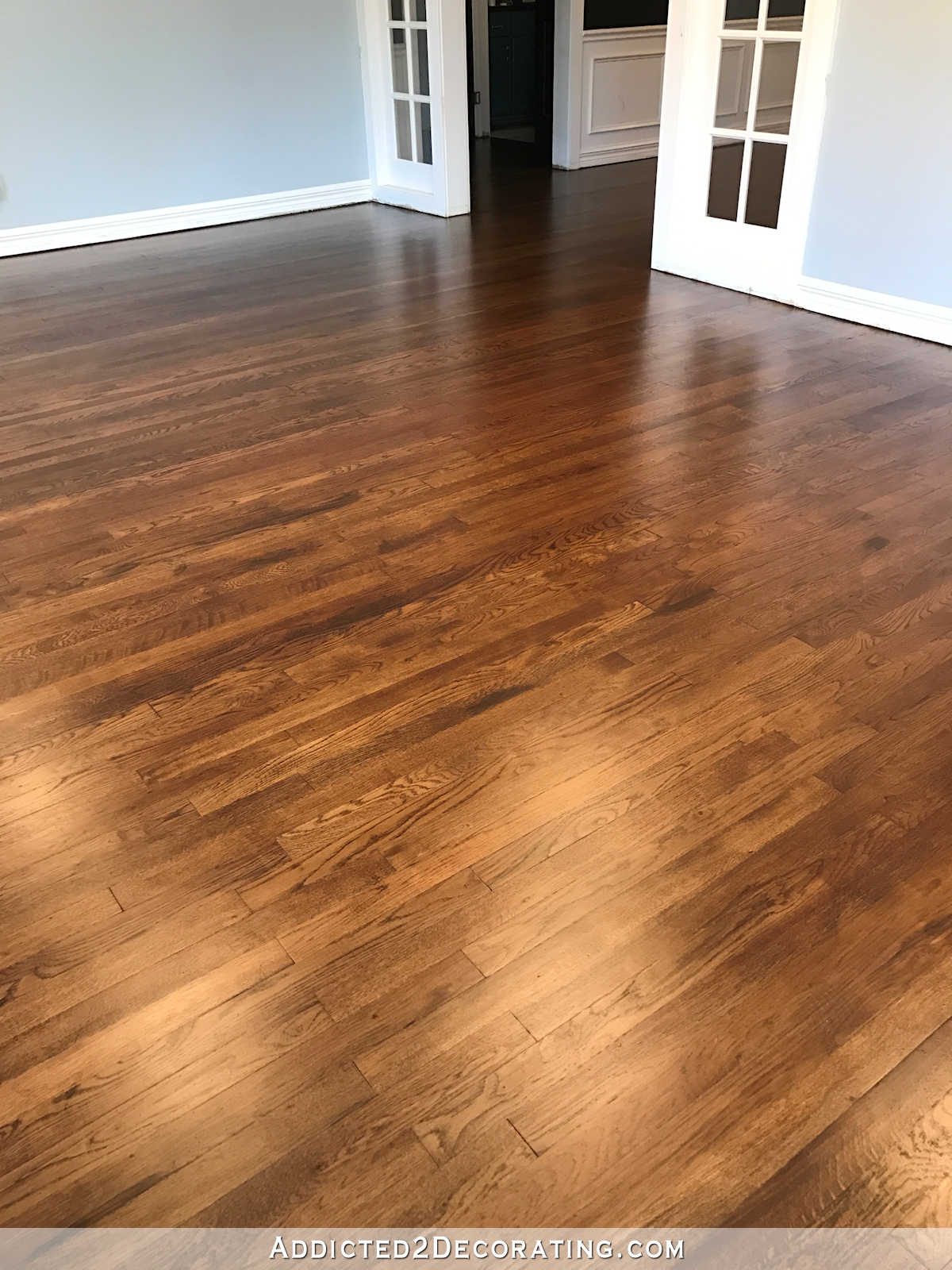

These floors have been very durable. I was nervous to use a product that couldn’t be easily spot-repaired, but they have held up beautifully over the years. I do think the finish has dulled a bit since they were newly finished, but I don’t mind that since I’m not a big fan of shiny finishes anyway.
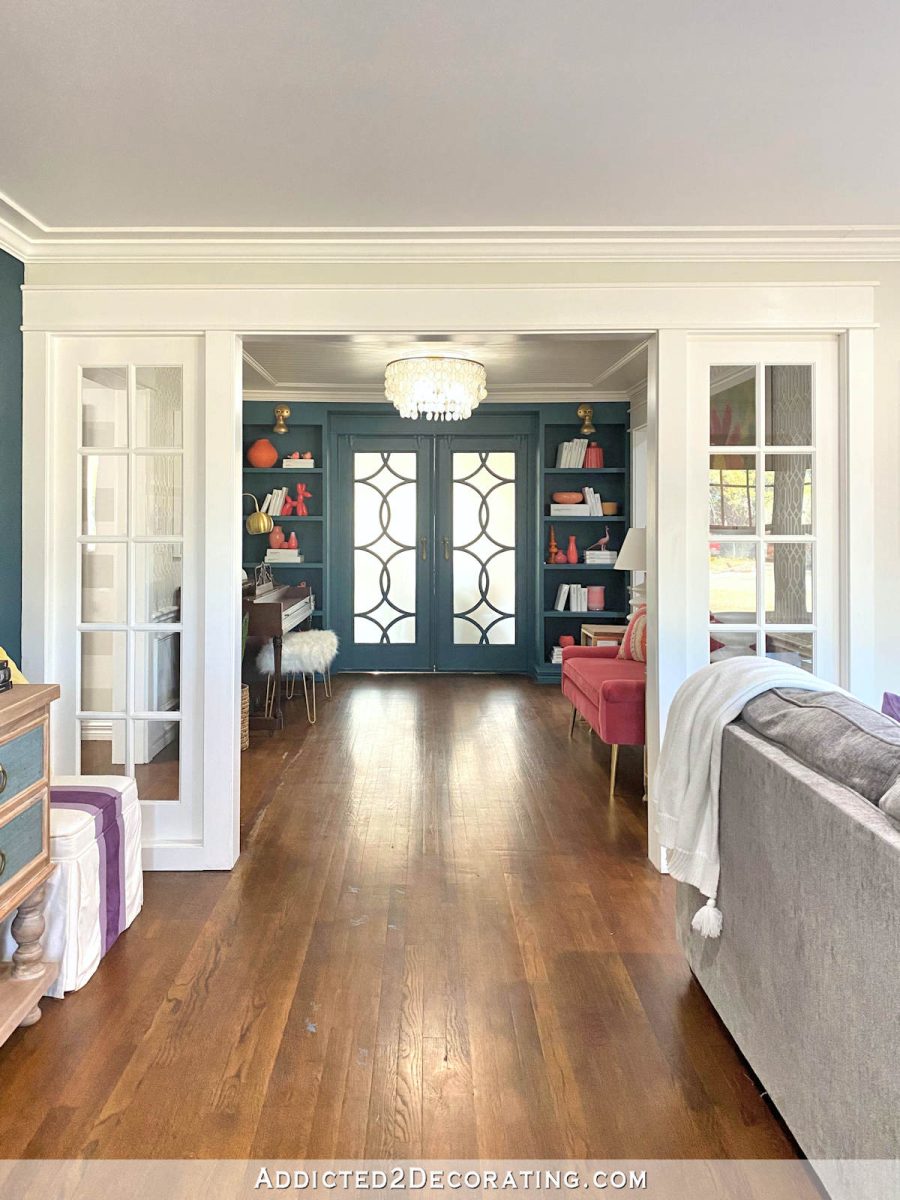

Since I polyurethaned the floor, we’ve had four animals in our house — three cats and one dog. Two of the cats are no longer with us 
The only time he has “allowed” his claws to be cut was when he had to be sedated for an X-ray, and the vet asked me if I wanted her to cut them when he was under anesthesia. That’s literally the only time they’ve been trimmed by a human since we’ve had him. I see him biting on them when they get so long that they start annoying him, but they get pretty long before he does that.
And again, he’s hyper. He generally doesn’t just walk from place to place. He jumps, runs, twirls. He’s like a hyper puppy, even though he’s 100 pounds and allegedly 12 years old, if they shelter is to be believed that he was five years old when we adopted him (which I find hard to believe just from his puppy-like behavior to this day).
With all of that said, I have been amazed at how our oil-based polyurethaned floors have held up to him. I don’t see scratches, gouges, or anything like that on our floor. I don’t know how easy it would be to repair a scratch or gouge on the oil-based polyurethaned floor because I’ve literally never had to do it.
Painted Floor Topcoated With Water-Based Polyurethane
In August of 2020, I painted the floor in our guest bedroom with regular Behr latex paint and then topcoated the floors using Varathane water-based polyurethane. Again, they looked gorgeous when they were new.
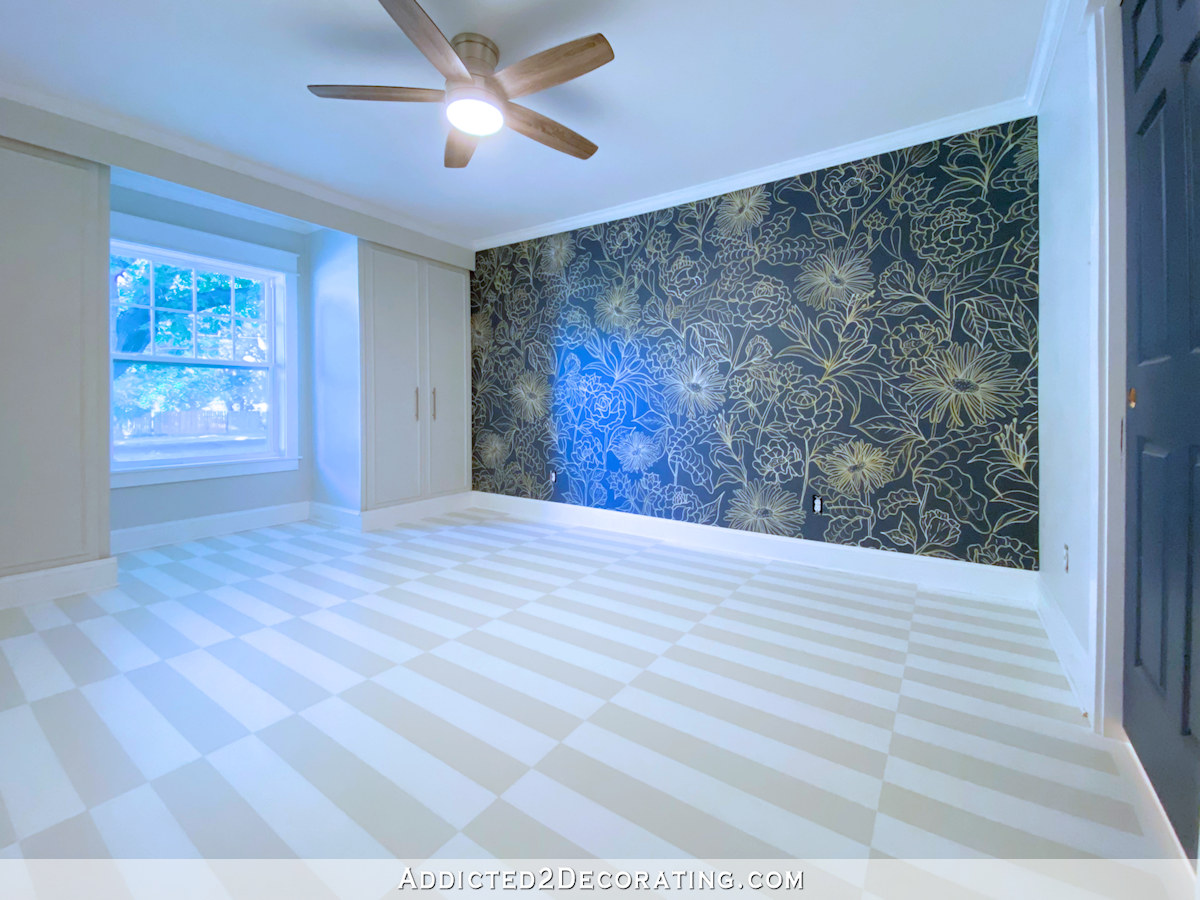

But these floors did not wear well over the next two years. I couldn’t find any pictures of just the worn areas on the floor, but you can see it plainly in the photos I took after my mom and I took a weekend to do the tear out of this room to prepare it for the contractor to come in and start the conversion from guest bedroom to closet and laundry area. The floor is dirty and dust-covered in the photo below because of our work that weekend, so you’ll have to look beyond that. You can clearly see those worn areas.


Pay special attention to the areas circled below. You can see that the finish is wearing off in the high traffic areas.


Here’s another look from the other direction…


And you can see it from this picture that I took for the post where I shared about creating a show closet for storing all of my shoes. Look beyond the shoes and you can see the worn finish.


I wasn’t sure if that was because of the paint I used (regular Behr latex paint), or because of the water-based finish. But this next one kind of gives me a clue…
Whitewashed Hardwood Floor With Water-based Polyurethane
The first finish I did on my studio floors was a gorgeous whitewashed finish topcoated with water-based Varathane polyurethane. Again, it was a beautiful finish when new.
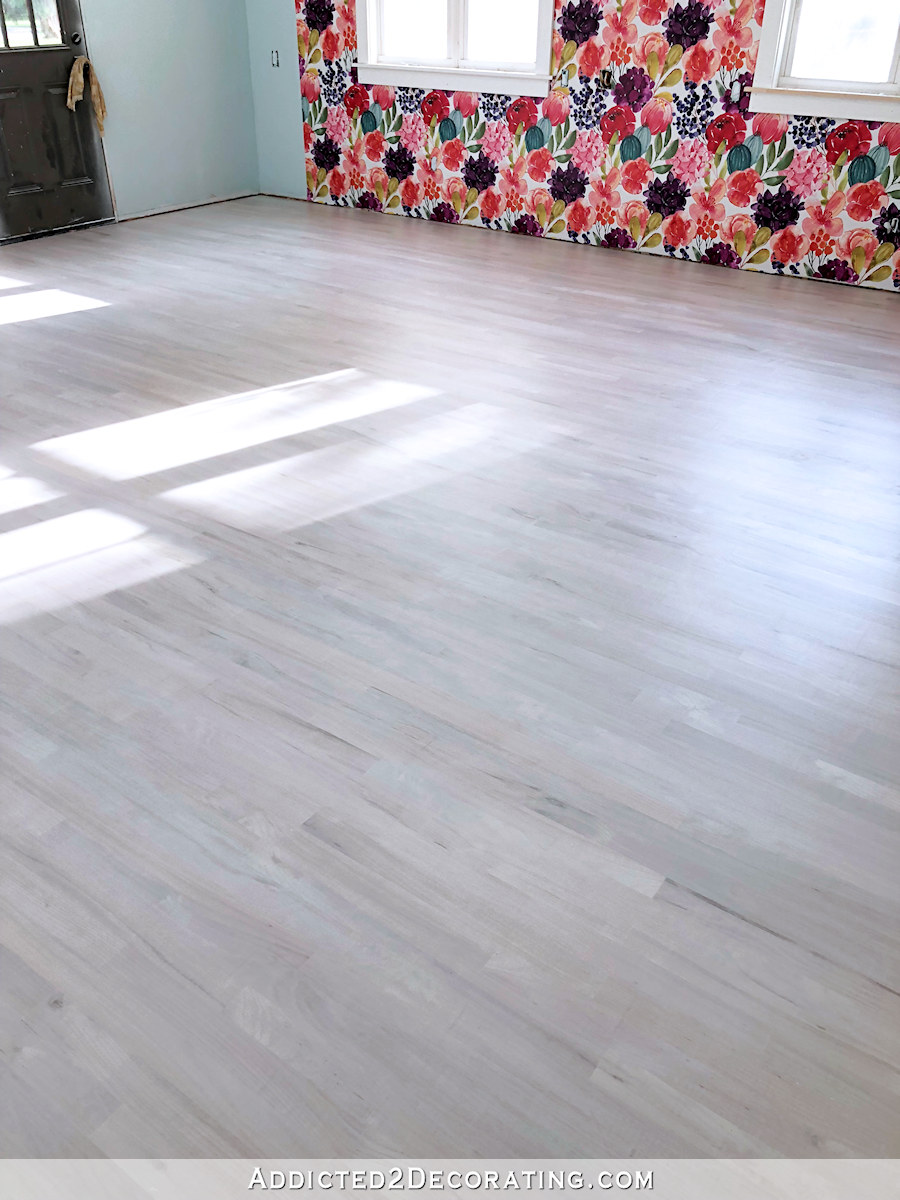

I couldn’t find pictures of this floor right before I refinished it, but it was awful. Not only had the color darkened, but there were some serious stains on the floor. This leads me to believe that water-based finishes will just never compare to oil-based polyurethanes. My oil-based polyurethaned floors are older than this floor was when I redid them, and I don’t have any stains on the oil-based polyurethaned floors.
Painted Floor With No Topcoat
And finally, there’s my new-ish painted floors in the studio. When I did these, I decided to forgo any topcoat so that they would be easy to repair. I used Behr Porch and Patio Floor paint. I had my doubts how well this would hold up without a topcoat, but I decided to take that gamble.
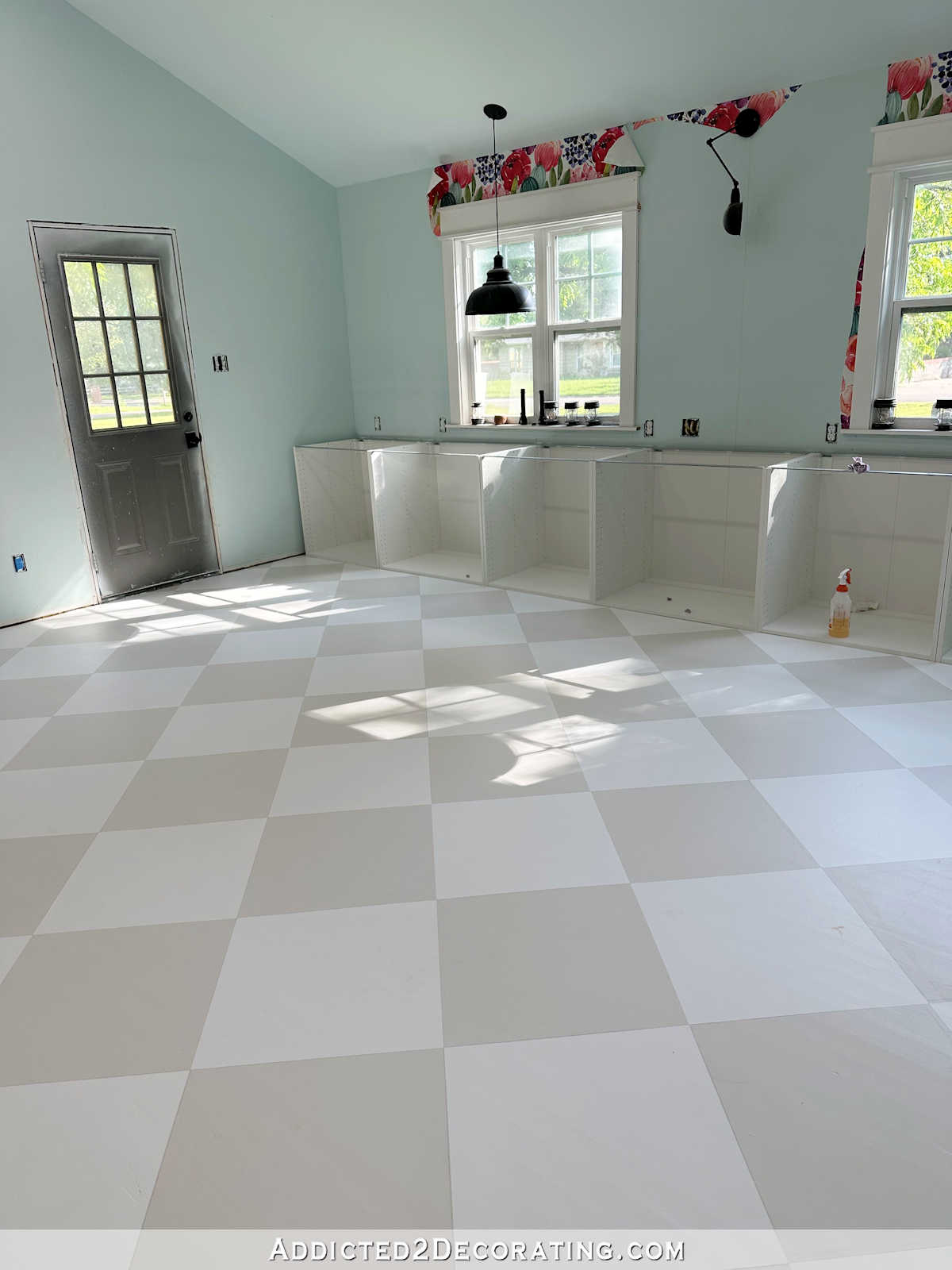

This floor has been AMAZING. I don’t know if it’s because of the primer I used (Zinsser B-I-N shellac-based primer) or the paint, but I have been so surprised at how durable this floor is. Our dog Cooper LOVES to play in my studio, and he plays rough. And yet, there’s not a single scratch or gouge anywhere to be found in this paint. This is the newest finish of any floor in our house. I just finished these in May 2023, but that would be plenty of time for him to scratch them, especially considering how much he plays in here. And yet, they’re holding up great.
So just going by my own personal experiences with these various finishes over the last 13 years, I’ve come to the following conclusions for myself:
- As long as I’m dealing with red oak hardwood floors, Waterlox won’t be an option for me because it brings out the orange in red oak. As much as I liked the finish and the easy spot-refinishing of the product, I just didn’t like the color. I can imagine choosing Waterlox if I had a naturally pretty species of wood like walnut or even white oak.
- I will never use a water-based polyurethane on floors in our house ever again. They just don’t seem to hold up over time. The finish seems to wear off quickly and stain easily.
- On floors that will be stained, I will only ever topcoat with oil-based polyurethane. My experience is that oil-based polyurethane is the most durable, hard-wearing finish available. And specifically, I have been very pleased with the Minwax oil-based polyurethane that I used on our floors. When it comes to water-based finishes vs. oil-based finishes, there’s no comparison, in my opinion. Oil-based wins out as far as durability and resistance to stains, and it’s not even a close call.
- If I ever paint another hardwood floor, I’ll only ever use the Zinsser B-I-N shellac-based primer and Behr Porch and Patio Floor paint combo that I used this last time in my studio. I have been amazed at the durability of that finish.
[ad_2]
Source link

